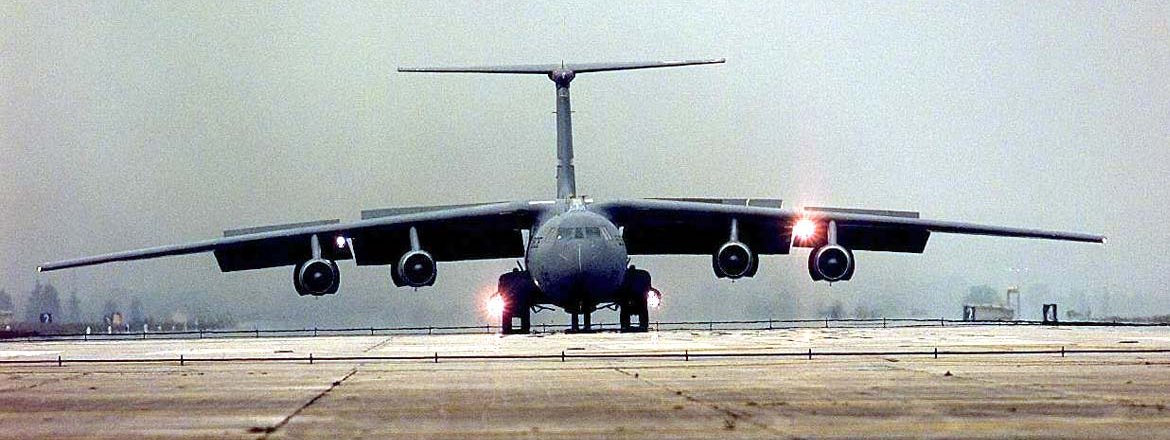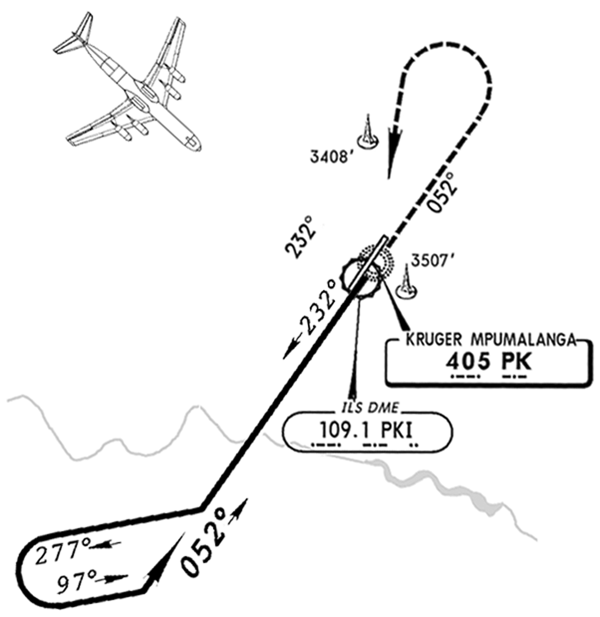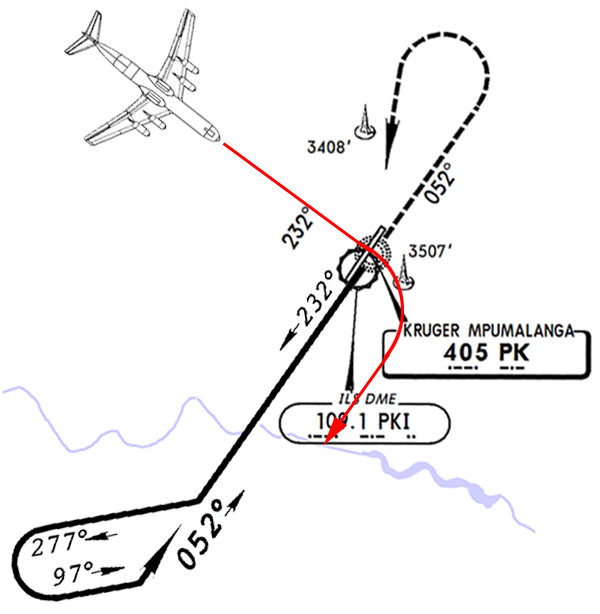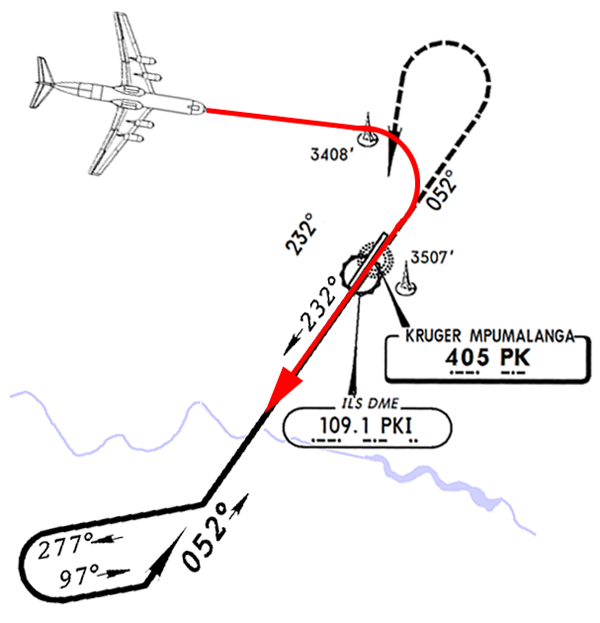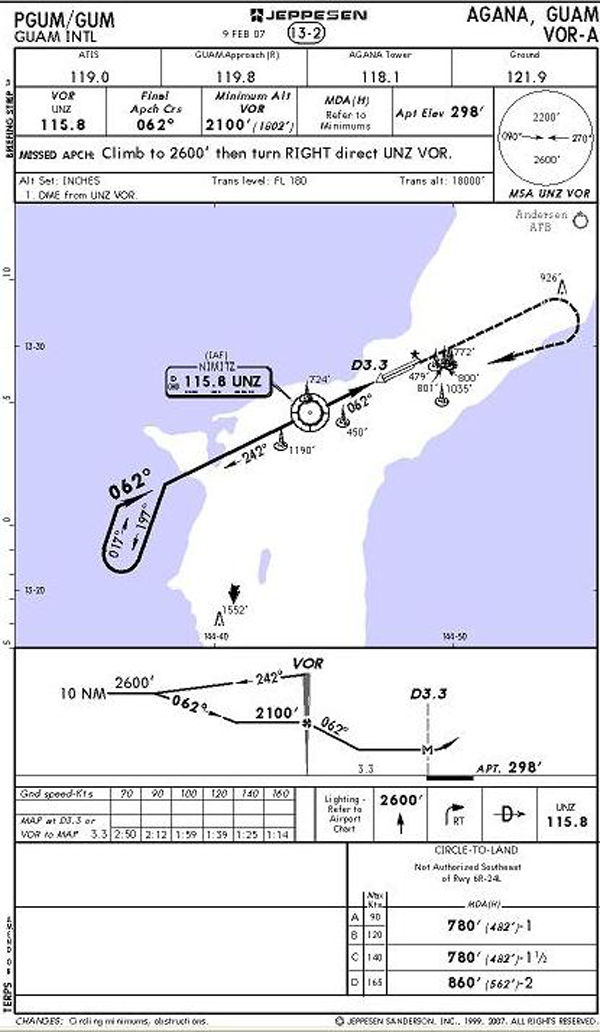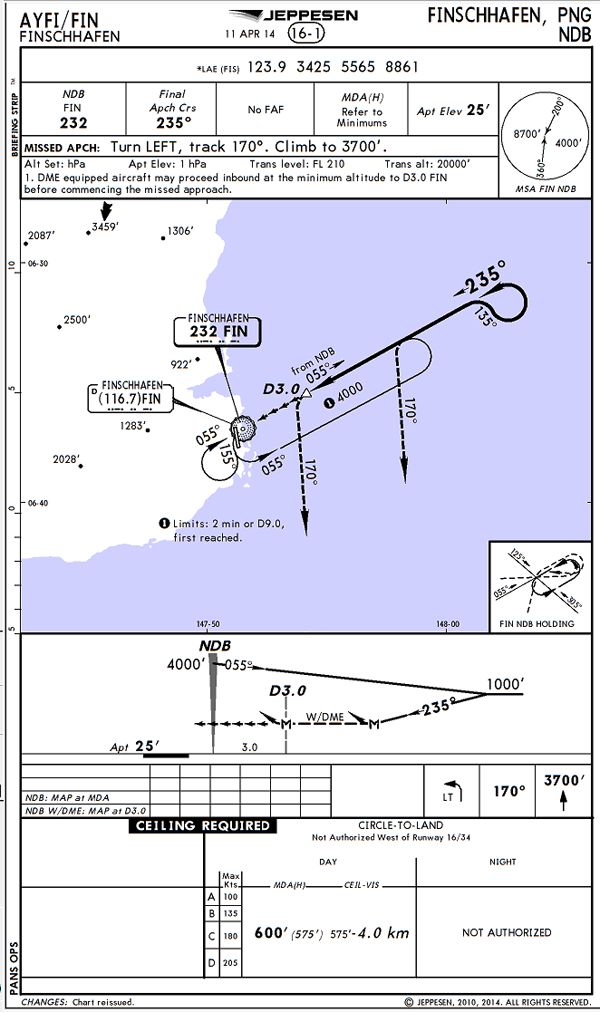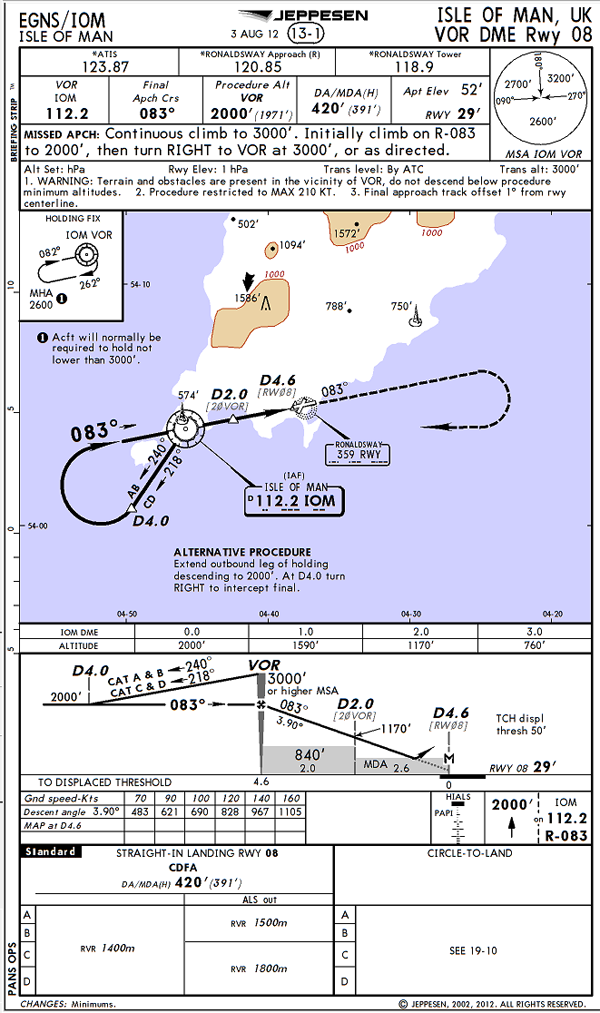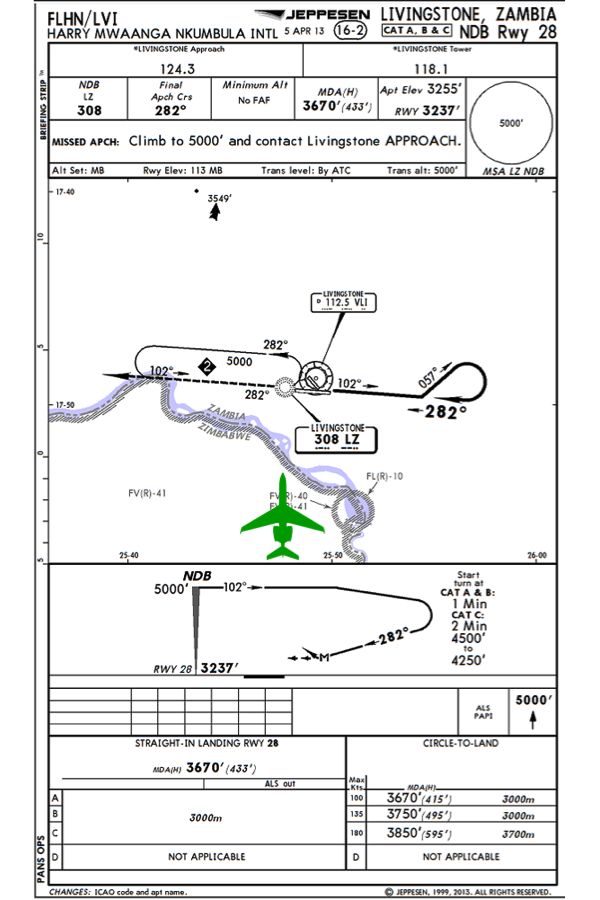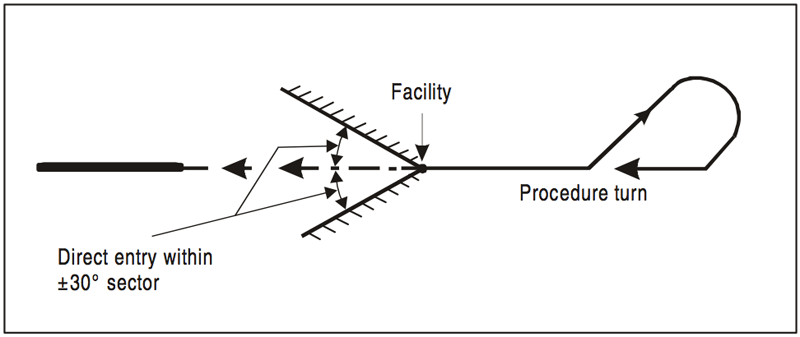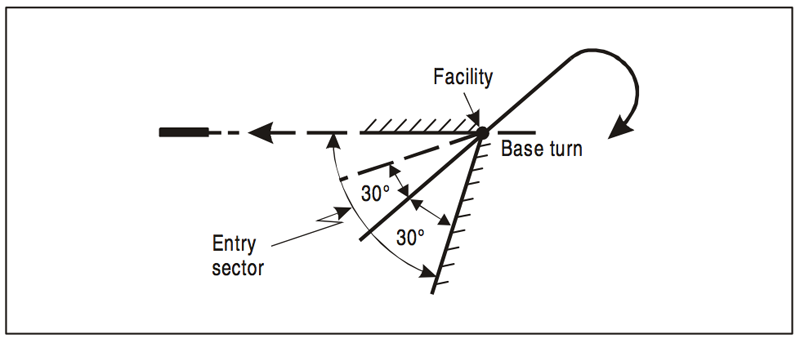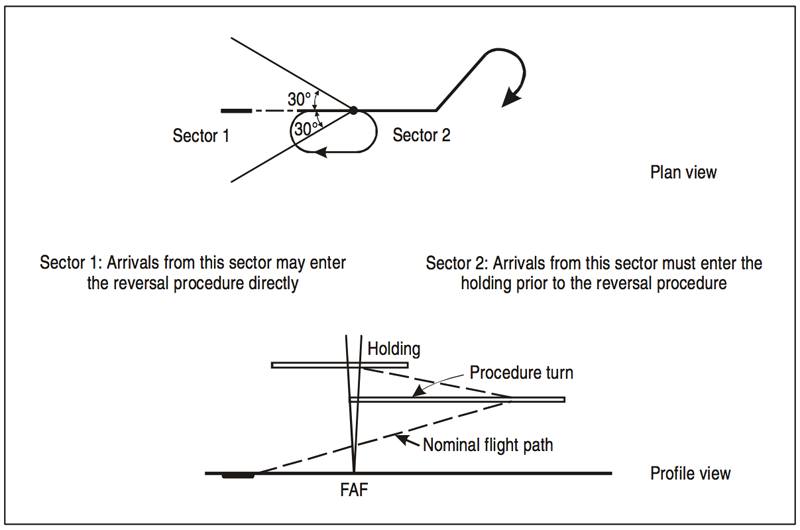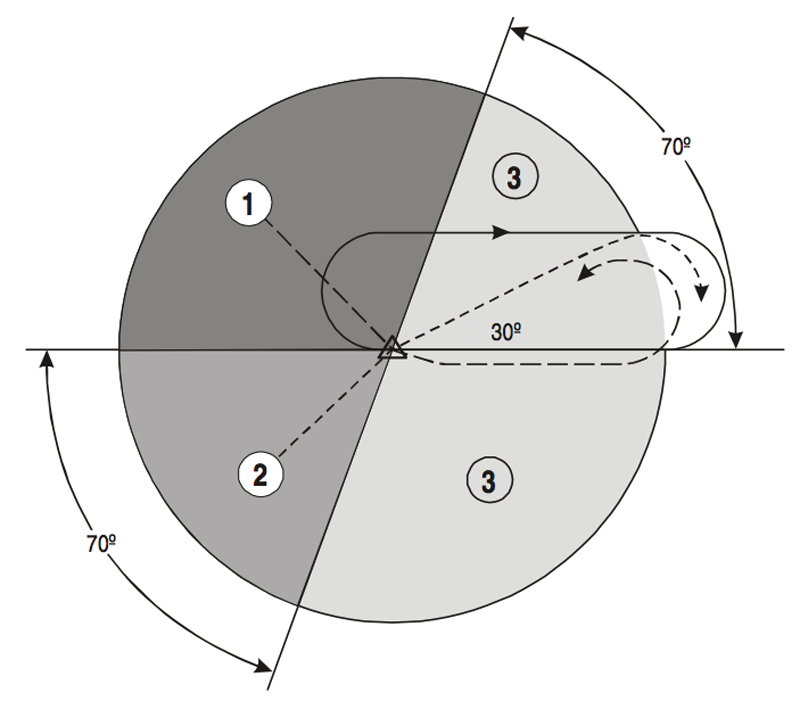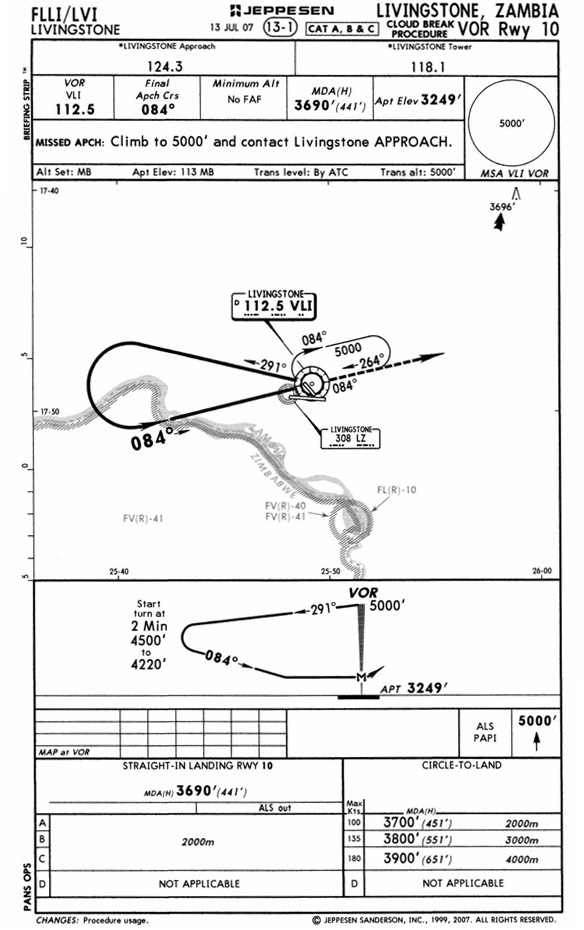Not too long ago it seemed you could attack any procedure turn in the world with a good old fashion holding pattern entry and call it good. Back in the bad old days, in the United States Air Force, we were taught to do that worldwide until a C-141 crew got violated in South Africa. Now we know better.
— James Albright

Updated:
2020-12-29
The protected airspace for what is more properly called a course reversal is different under ICAO. The procedures in the United States have been more closely aligned with the ICAO though few of our domestic pilots know that or actually follow those rules. For more about the way we do these things in the United States: Procedure Turn / Hold-in-Lieu of Procedure Turn.
You should learn the ICAO procedures because they are required in most of the world. You can use those same procedures in the United States now, just keep in mind you have to limit your entry speeds to 200 knots and you may not be able to fly as fast during some of the maneuvering.

1
Kruger Mpumalanga example
The Scenario
In 1984 a United States Air Force C-141 was approaching Kruger Mpumalanga International Airport in South Africa, approaching from the northwest. They were heading 140°, about 90° to course, approaching the PK NDB with clearance to fly the NDB DME Rwy 05. This approach has changed since then, it is now a "Racetrack Procedure" but back then it was as depicted, at 45°/180° course reversal.
How would you enter this procedure turn?
The USAF Solution - 1984
The C-141 crew's solution came from the Air Force instrument pilot's manual:
A parallel procedure turn entry may be used any time. If the inbound procedure turn course is within 70° of the aircraft heading, turn outbound toward the maneuvering side to parallel the inbound procedure turn course. If the inbound procedure turn course is not within 70° of the aircraft heading, turn outbound in the shorter direction to parallel or intercept the inbound course.
Source: Air Force Manual 51-37, ¶6-11
Note also that these procedures were identical to U.S. FAA procedures at the time and they are probably exactly what most U.S. domestic pilots are taught today.
The C-141 was not heading within 70° of the inbound course, so they turned right to parallel the procedure turn course. At the time I was an Air Force instrument instructor pilot and they did exactly what I would have done. The protected airspace for this type of course reversal is less than for a U.S. procedure turn. But the issue was a wildlife area they ended up flying over. They were violated by the South African civil air authority.
The Correct Procedure
Unless the procedure specifies particular entry restrictions, reversal procedures shall be entered from a track within ±30° of the outbound track of the reversal procedure. However, for base turns, where the ±30° direct entry sector does not include the reciprocal of the inbound track, the entry sector is expanded to include it.
Source: ICAO Document 8168, Vol 1, §4, ¶3.3.1.
So what should they have done? They should have requested maneuvering airspace to the north so as to make the desired entry possible, as shown here:
My radio call: "Request heading about one-zero-zero for maneuvering north of the NDB to intercept the outbound course." I've done this at Kruger twice and they okayed the request both times.
2
ICAO procedures
45°/180° Procedure Turn
45°/180° procedure turn starts at a facility or fix and consists of:
- a straight leg with track guidance. This straight leg may be timed or may be limited by a radial or DME distance;
- a 45° turn;
- a straight leg without track guidance. This straight leg is timed. It is:
- 1 minute from the start of the turn for Category A and B aircraft; and
- 1 minute 15 seconds from the start of the turn for Category C, D and E aircraft; and
- a 180° turn in the opposite direction to intercept the inbound track.
The 45°/180° procedure turn is an alternative to the 80°/260° procedure turn [b) below] unless specifically excluded.
Source: ICAO Document 8168, Vol 1, §5, ¶3.2.2.3 a
Unlike the U.S. FAA Standard Procedure Turn, also known as the 45°/180° Procedure Turn, the straight leg without track guidance is timed under ICAO procedures. The timing is mandatory unless a DME limit is given.
Example
I shot this approach in a KC-135A tanker about 1980 using the wrong entry procedures and nobody seemed to notice. I suspect that is still true to this day, most U.S. trained pilots are getting away with using holding pattern entry procedures because it usually doesn't matter. Key word here: usually.
Learn the correct entry procedures: Entry Procedures.
80°/260° Procedure Turn
80°/260° procedure turn starts at a facility or fix and consists of:
- a straight leg with track guidance. This straight leg may be timed or may be limited by a radial or DME distance;
- an 80° turn;
- a 260° turn in the opposite direction to intercept the inbound track.
The 80°/260° procedure turn is an alternative to the 45°/180° procedure turn [a) above] unless specifically excluded.
Source: ICAO Document 8168, Vol 1, §5, ¶3.2.2.3 b
The only advantage of the 80°/260 over the 45°/180° is time: it gets you pointed back to the runway more quickly. But there is a big disadvantage: adjusting for wind, the only correction available to you is bank angle. If the wind is strong enough, you could find yourself blown onto the non-protected side before completing your turn inbound. ICAO says "the 45°/180° procedure turn is an alternative to the 80°/260° procedure turn unless specifically excluded," you would be wise to use the 45°/180° if there is any kind of wind.
Example
I've never seen a published 80°/260° Procedure Turn in the United States and those I've seen internationally are a disappearing breed. There are a few left in Papua New Guinea and I've seen one in Egypt. But most places that have had them long ago changed to racetrack, base turn, or standard procedure turns. The 80°260° gives the pilot very little room to adjust for winds. If given a choice, any course reversal should be preferred to the 80°/260°.
In the example shown you should avail yourself of the full 3 minutes outbound allowed to give yourself enough time to intercept the course inbound. If the winds are from the north the 80°/260° should work well. If the winds are from the south, the 45°/180° may be a better choice.
Base Turn
Base turn consists of:
- a specified outbound track and timing or DME distance from a facility; followed by
- a turn to intercept the inbound track
The outbound track and/or the timing may be different for the various categories of aircraft. Where this is done, separate procedures are published.
Source: ICAO Document 8168, Vol 1, §5, ¶3.2.2.3 c
Example
I asked to fly the entire procedure, just to say I did, but they wouldn't have any of that and we ended up with vectors to final. Notice the alternative procedure, in this case, allows you to enter from the holding pattern.
Racetrack
A racetrack procedure consists of:
- a turn from the inbound track through 180° from overhead the facility or fix on to the outbound track, for 1, 2 or 3 minutes; followed by
- a 180° turn in the same direction to return to the inbound track.
As an alternative to timing, the outbound leg may be limited by a DME distance or intersecting radial/bearing.
Source: ICAO Document 8168, Vol 1, §5, ¶3.2.3
Example
This approach didn't exist back when I used to fly into Tuzla with a flack vest and side arm in an otherwise unarmed airplane. See me in a bar, buy me a beer, and I will tell you about it.
3
Entry procedures
Example
Approaching from the south you are cleared direct the LZ NDB to fly the NDB Rwy 28 approach. It isn't the most crowded airspace in Africa, but it wouldn't be a good thing to fly the procedure in a way that surprises approach control or the tower. So, intrepid world traveler, which way to do you turn? Left or right?
The answer is you turn left for a trip in the holding pattern to place yourself within a 30° entry cone for the 45°/180° procedure turn. So yes, you will be doing a circuit on the left and then another kind of circuit on the right. I've flown this but here's what I did: I requested maneuvering airspace to the west. "Request twenty degrees left to begin the approach two miles from the west." My request was approved and I was able to save a little bit of time.
Could you make a right turn entry to the 45°/180°, as would be permitted in the United States, saving a good deal of time and jet fuel? It isn't the way the approach is flown, by the book, but you can always ask. But you have to ask. (Don't be surprised if they say no.)
45°/180°, 80°/260°, and Base Turn Entry Procedures
Unless the procedure specifies particular entry restrictions, reversal procedures shall be entered from a track within ±30° of the outbound track of the reversal procedure. However, for base turns, where the ±30° direct entry sector does not include the reciprocal of the inbound track, the entry sector is expanded to include it.
Source: ICAO Document 8168, Vol 1, §5, ¶3.3.1
You've got to be within these entry sectors to be permitted to begin the 45°/180°, 80°/260°, or base turn procedure. What if you aren't?
Most of these procedures have a holding pattern nearby and ICAO Document 8168, Vol 1, figure I-4-3-4, states "arrivals from this sector must enter the holding prior to the reversal procedure." What if there isn't a holding pattern depicted? I would request "maneuvering airspace" opposite the course reversal so that I could maneuvering the aircraft into the entry sector.
Racetrack Entry Procedures
Normally a racetrack procedure is used when aircraft arrive overhead the fix from various directions. In these cases, aircraft are expected to enter the procedure in a manner similar to that prescribed for a holding procedure entry with the following considerations:
- offset entry from Sector 2 shall limit the time on the 30° offset track to 1 min 30 s, after which the pilot is expected to turn to a heading parallel to the outbound track for the remainder of the outbound time. If the outbound time is only 1 min, the time on the 30° offset track shall be 1 min also;
- parallel entry shall not return directly to the facility without first intercepting the inbound track when proceeding to the final segment of the approach procedure; and
- all manoeuvring shall be done in so far as possible on the manoeuvring side of the inbound track.
Source: ICAO Document 8168, Vol 1, §5, ¶3.2.3.2
4
Approach design notes
Jeppesen Approach Plate Marking
The approach design can be determined from the bottom-left corner of the procedure. The absence of a PANS OPS or TERPS margin notation means the instrument approach design criteria is either unknown or the chart was dated before 21 NOV 03.
- TERPS. Indicates the State has specified that the procedure complies with FAA Order 8260.3B, United States Standard for Terminal Instrument Procedures (TERPS).
- PANS OPS. Indicates the State has specified that the procedure complies with ICAO Document 8168, Vol 1, Procedures for Air Navigation Services, Aircraft Operations (PANS OPS).
Source: Jeppesen Airway Manual Approach Chart Legend
Some countries other than the U.S. use TERPS for some or all of their approach procedures. Guam, for example, uses TERPS. Korea, for another example, uses TERPS for some airports used by the U.S. military.
Non-Emergency Statement
U.S.
These criteria are predicated on normal aircraft operations for considering obstacle clearance requirements. Normal aircraft operation means all aircraft systems are functioning normally, all required navigation systems are performing within flight inspection parameters, and the pilot is conducting instrument operations utilizing IFPs based on the TERPS standard to provide ROC.
Source: TERPS, ¶2-2-3
ICAO
Procedures contained in PANS-OPS assume that all engines are operating.
Source: ICAO Document 8168, Vol 1, Ch. 1, ¶1.1.1
5
Unique country-specific procedures
As they taught us in Air Force Instrument Instructor School, you can can't explain every approach because of the “Sergeant Snuffy” factor. Every approach is designed by a human like Sergeant Snuffy who went to a class to learn how to build the approach but he wasn't paying attention every day so you never know what he's going to build or get approved.
Example: Livingstone Cloud Break Procedure VOR Rwy 10
We don't all use the same terminology, even in aviation, and sometimes the terminology changes and not everyone gets the memo. The “Cloud Break Procedure” is as good example as any.
There is no longer any guidance on what a “cloud break procedure” is or how to fly it. It was once the accepted terminology for a non-precision approach that doesn't terminate at the end of a runway. It was simply used to break below a cloud layer, spot the airport, and visually land. When you see the “cloud break procedure” terminology, it is simply your cue to examine the procedure carefully.
References
(Source material)
Air Force Manual (AFM) 51-37, Instrument Flying, 1 December 1976
FAA-H-8083-15B, Instrument Flying Handbook, U.S. Department of Transportation, Flight Standards Service, 2012.
ICAO Doc 8168 - Aircraft Operations - Vol I - Flight Procedures, Procedures for Air Navigation Services, International Civil Aviation Organization, Sixth Edition, 2018
Jeppesen Airway Manual
United States Standard for Terminal Instrument Procedures (TERPS), Federal Aviation Administration 8260.3C, 03/14/2016
